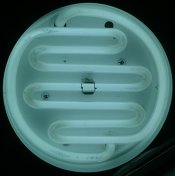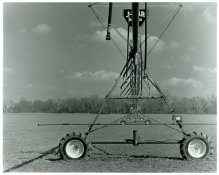jstraw
Member
Boy do I feel stupid.
It finally dawned on me that I've been having to burn in all my prints from 4x5 negs in the same areas. So I got suspicious about an uneven light source. I focused the bare lamp onto my baseboard and grabbed the lamp housing and rotated it and could clearly see dark patches following the rotation. Only then did I lift the housing and actually look at the lamp.
Let's just say that I was jumping trough needless hoops printing...and a lot of print recipes will be out the window now.
The upside is that I'd already ordered a new D2-HI-V54 from Aristo for unrelated reasons. Yeah, I know...those print recipes are out the window anyway.
I never noticed this with the 6x6 negs because the problem isn't apparent in the center of the lamp.
My lamp must be about 19 years old. If yours is of a similar vintage you may want to check and see if it looks anything like this one...
(note: what you see is all on the inside of the tube, not the exterior surface)
It finally dawned on me that I've been having to burn in all my prints from 4x5 negs in the same areas. So I got suspicious about an uneven light source. I focused the bare lamp onto my baseboard and grabbed the lamp housing and rotated it and could clearly see dark patches following the rotation. Only then did I lift the housing and actually look at the lamp.
Let's just say that I was jumping trough needless hoops printing...and a lot of print recipes will be out the window now.
The upside is that I'd already ordered a new D2-HI-V54 from Aristo for unrelated reasons. Yeah, I know...those print recipes are out the window anyway.
I never noticed this with the 6x6 negs because the problem isn't apparent in the center of the lamp.
My lamp must be about 19 years old. If yours is of a similar vintage you may want to check and see if it looks anything like this one...
(note: what you see is all on the inside of the tube, not the exterior surface)













